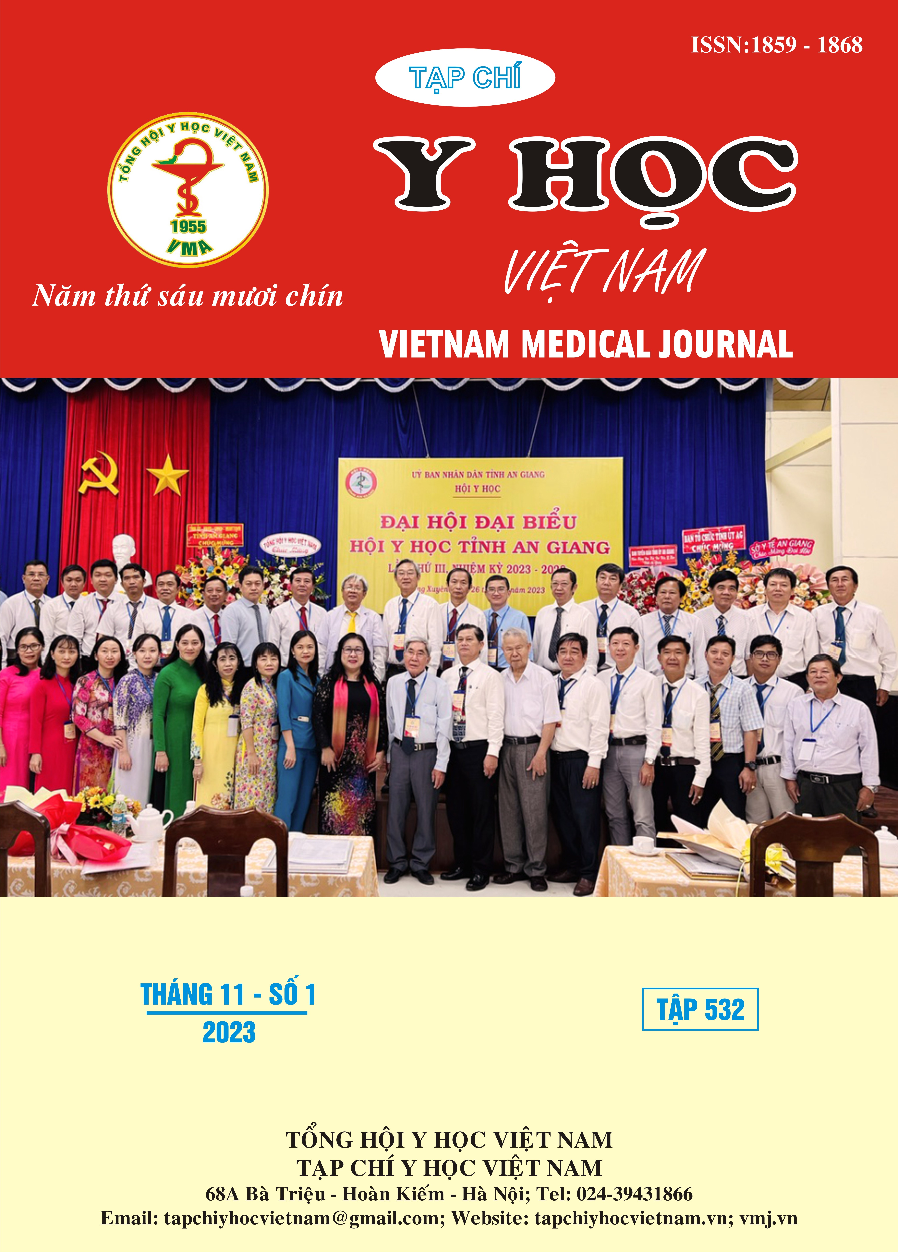ASSESSMENT OF THE RESULTS OF PEDIATRIC CONSTRAINT – INDUCED MOVEMENT THERAPY AND BIMANUAL TRAINING INTERVENTION FOR CHILDREN WITH SPASTIC CEREBRAL PALSY
Main Article Content
Abstract
Objectives: To evaluate the results of intervention of pediatric constraint – induced movement therapy and bimanual intensive training for children with spastic cerebral palsy. Subjects and Methods: Prospective study, clinical trial, comparison before and after treatment on 20 children with spastic cerebral palsy receiving Pediatric constraint-induced movement therapy and bimanual training. Results: 20 children with cerebral palsy, mostly classified as MACS and Mini- MACS levels II, III, Quality of Upper Extremity Skills Test (QUEST) scale increased by 9.09 points after 4 weeks and increased by 14.73 points after 8 weeks. Pediatric Motor Activity Log( PMAL) “ How often scale” increased by 0.69 points after 4 weeks and increased by 1.11 points after 8 weeks, PMAL “ How well scale” increased by 0.60 after 4 weeks and increased by 0.99 points after 8 weeks. Box and block test (BBT) also increased the likelihood of moving 2.4 cubes after 4 weeks and 3.55 cubes after 8 weeks. The difference was statistically significant (p<0,01). Conclusion: Combining both methods of P-CIMT and bimanual training helps children with spastic cerebral palsy to improve hand function
Article Details
Keywords
Spastic cerebral palsy, constraint- induced movement therapy, bimanual training, P-CIMT.
References
2. Oskoui, M.; Coutinho, F.; Dykeman, J.; Jetté, N.; Pringsheim, T. An Update on the Prevalence of Cerebral Palsy: A Systematic Review and Meta-Analysis. Dev Med Child Neurol 2013, 55 (6), 509–519. https://doi.org/10.1111/dmcn.12080.
3. DeLuca, S.; Echols, K.; Ramey, S. L. ACQUIREc Therapy: A Training Manual for Effective Application of Pediatric Constraint-Induced Movement Therapy; Mindnurture, 2007.
4. Gelkop, N.; Burshtein, D. G.; Lahav, A.; Brezner, A.; AL-Oraibi, S.; Ferre, C. L.; Gordon, A. M. Efficacy of Constraint-Induced Movement Therapy and Bimanual Training in Children with Hemiplegic Cerebral Palsy in an Educational Setting. Physical & Occupational Therapy In Pediatrics 2015, 35 (1), 24–39. https://doi.org/10.3109/01942638.2014.925027.
5. Hoàng Thị Liên. Đánh giá hiệu quả chương trình P-CIMT cho trẻ bại não thể co cứng tại bệnh viện Phục hồi chức năng Hà Nội. Thesis, TRƯỜNG ĐẠI HỌC Y HÀ NỘI, 2020. http://dulieuso.hmu.edu.vn/handle/hmu/3166 (accessed 2023-07-28).
6. Taub, E.; Ramey, S. L.; DeLuca, S.; Echols, K. Efficacy of Constraint-Induced Movement Therapy for Children with Cerebral Palsy with Asymmetric Motor Impairment. Pediatrics 2004, 113 (2), 305–312. https://doi.org/10.1542/peds.113.2.305.
7. Sung, I.-Y.; Ryu, J.-S.; Pyun, S.-B.; Yoo, S.-D.; Song, W.-H.; Park, M.-J. Efficacy of Forced-Use Therapy in Hemiplegic Cerebral Palsy. Arch Phys Med Rehabil 2005, 86 (11), 2195–2198. https://doi.org/10.1016/j.apmr.2005.05.007.


